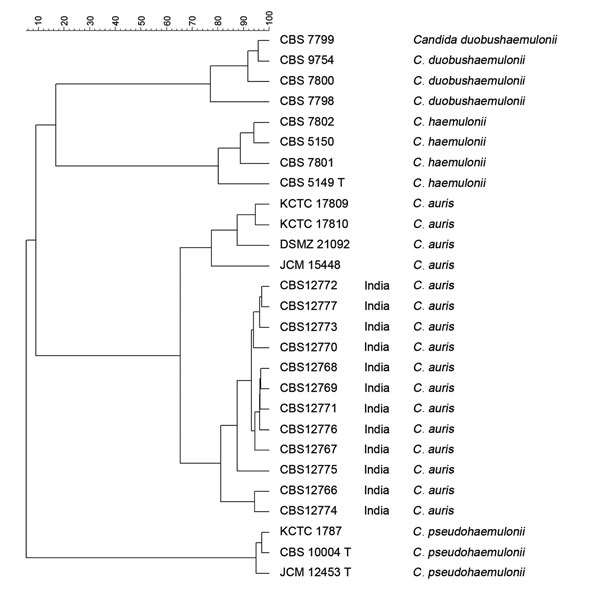Volume 19, Number 10—October 2013
Dispatch
New Clonal Strain of Candida auris, Delhi, India
Figure 2

Figure 2. . Dendrogram of amplified fragment length polymorphism analysis of Candida auris isolates from India, Japan, and South Korea and members of C. haemulonii complex. It was constructed by using UPGMA (unweighted pair group method with averages) in combination with the Pearson correlation coefficient and was restricted to fragments of 60–400 bp. Scale bar indicates the percentage similarity.
Page created: September 16, 2013
Page updated: September 16, 2013
Page reviewed: September 16, 2013
The conclusions, findings, and opinions expressed by authors contributing to this journal do not necessarily reflect the official position of the U.S. Department of Health and Human Services, the Public Health Service, the Centers for Disease Control and Prevention, or the authors' affiliated institutions. Use of trade names is for identification only and does not imply endorsement by any of the groups named above.